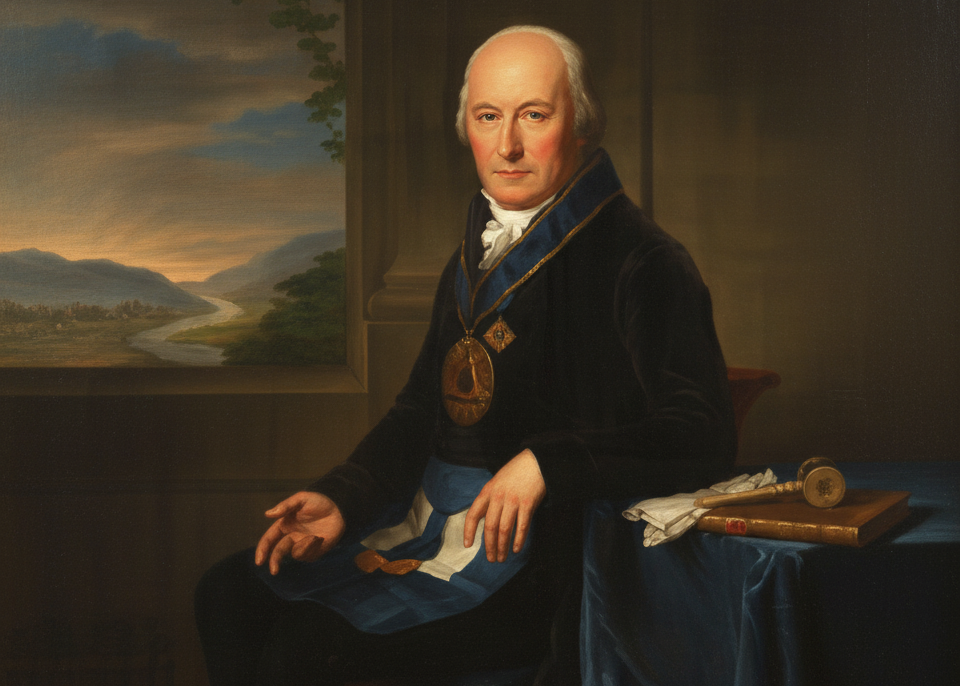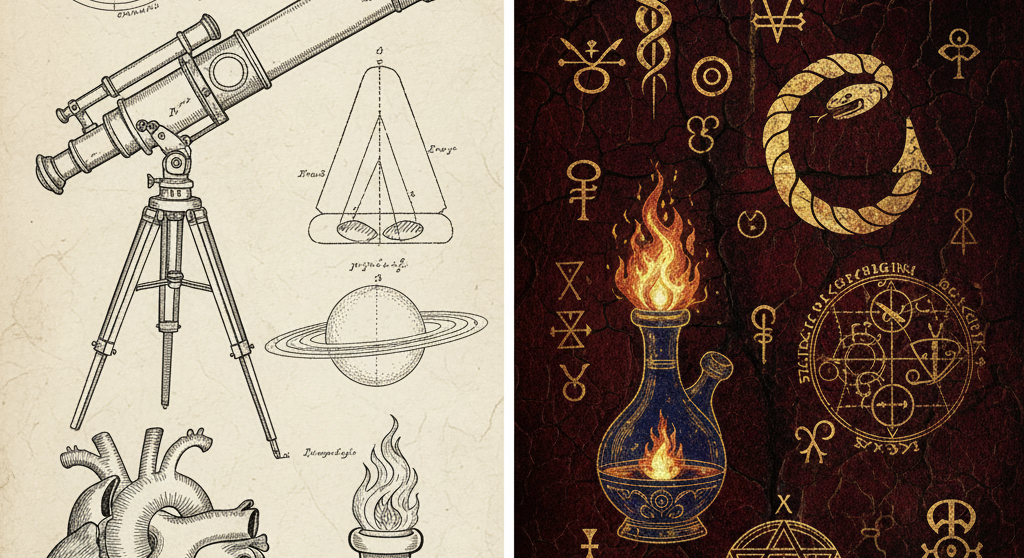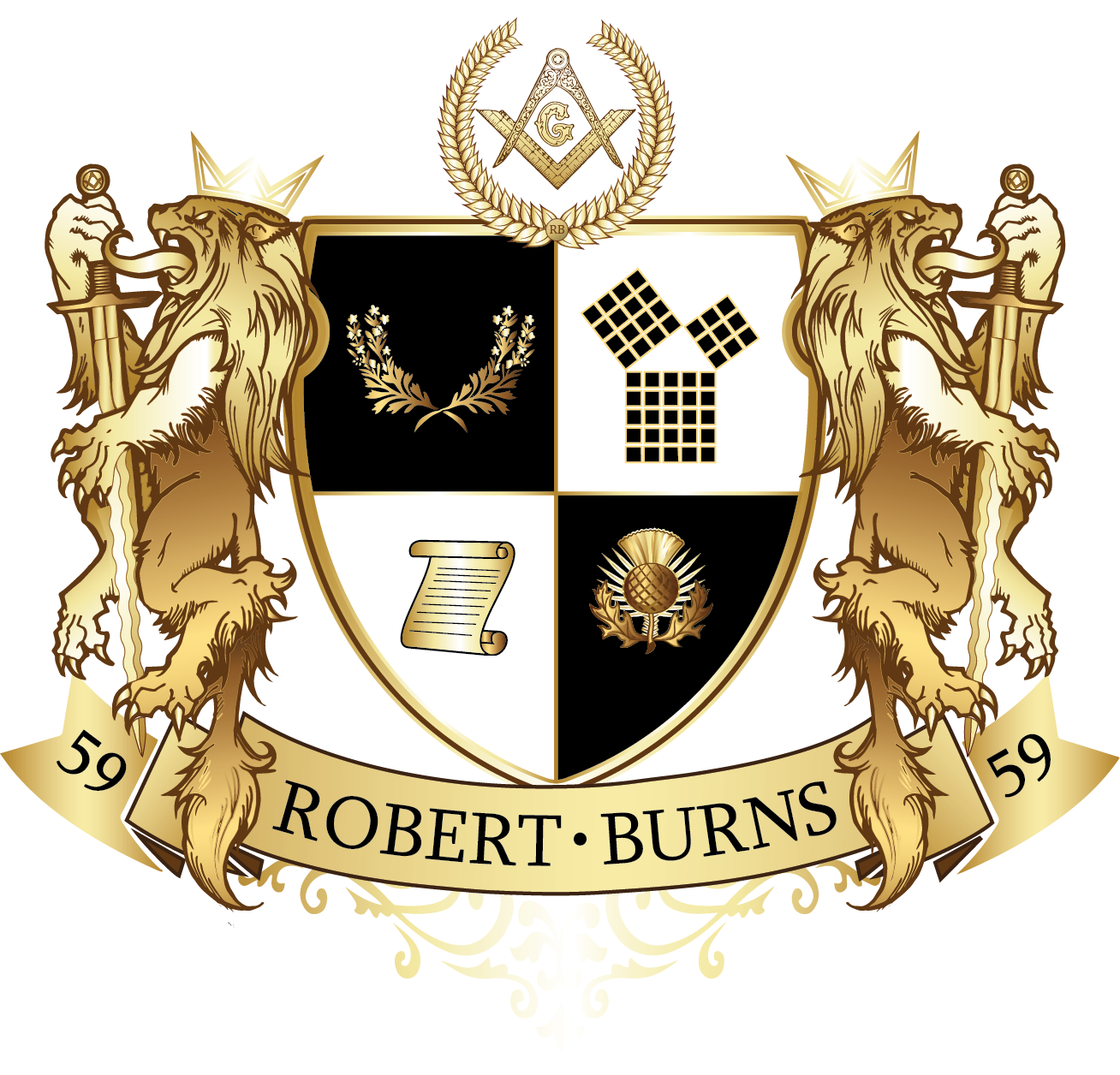The Schröder Rite
The Schröder Rite (in German: Schrödersche Lehrart) is a distinctive Masonic system developed at the turn of the 19th century that stands as a powerful testament to the Enlightenment ideals of rationalism, simplicity, and fidelity to the core tenets of the Craft. Conceived by the renowned German actor and theatrical manager Friedrich Ludwig Schröder, the Rite was a direct and successful attempt to strip away the complex, often fabricated, esoteric accretions that had overwhelmed European Free-Masonry during the 18th century, advocating instead for a sincere, three-degree system focused purely on ethical development and the symbolism of the Builders.
The Crisis of Ritual Integrity in 18th-Century German Free-Masonry
The environment into which the Schröder Rite was introduced was volatile and conceptually confused. The mid-to-late 18th century in Central Europe, particularly in German and French territories, was characterized by an explosion of high-degree systems that extended far beyond the three foundational Craft degrees. These Rites frequently "overloaded the rituals with all sorts of borrowings from traditions outside the symbolism of the Builders".
The most dominant example of this trend was the Rite of Strict Observance (RSO), founded by Karl Gotthelf von Hund. The RSO constructed an elaborate, highly appealing, but ultimately fabricated mythology around an alleged descent from the medieval Knights Templar. Its structure was complex, featuring seven degrees: Entered Apprentice, Fellow Craft, Master Mason, Scot, Novice, Templar, and Professed Knight. This system, and others like it, featured "pompous decorum" and "exorbitant costs," creating an "authoritarian hierarchy" often dominated by "grandiloquence, mysticism and taste for the spectacular and macabre".
Reformers like Schröder viewed these systems as inherently flawed, noting that they often displayed "barely veiled contempt for the Craft Lodges," reducing the original three degrees to "no more than a vague preliminary to higher speculations". The intellectual integrity of these high-degree structures was severely compromised when the founder of the RSO, Baron von Hund, was summoned to a Convent in Kohlo in 1772 and was forced to admit that his entire Templar continuity claim was a "hoax". This exposure, alongside associated issues such as "embezzlement," profoundly discredited the high-degree structure in the eyes of many established Masonic leaders.
It is clear that the Schrödersche Lehrart emerged as an intellectual counter-reformation. German Free-Masonry had strayed into esoteric pursuits—alchemy, theurgy, and Templar fantasies—which fundamentally contradicted the rational inquiry and moral philosophy central to the European Enlightenment. Schröder’s work was a necessary act of purification, designed to discard systems built on fabrication and restore ethical coherence. By asserting the completeness of the Master Mason degree, the reform directly challenged the Masonic pride associated with holding numerous high titles and relieved the psychological burden imposed by unnecessary complexity.

Friedrich Ludwig Schröder
The architectural brilliance of the Schröder Rite stems directly from the professional background of its founder, Friedrich Ludwig Schröder (1744–1816). A pivotal figure in German cultural history, Schröder was an acclaimed actor, manager, and dramatist, recognized during his lifetime as the best German actor and later honored as the Renovator of German Theatre. His managerial efforts, alongside Abel Seyler, were key to introducing Shakespeare to the German stage.
Schröder began his Masonic journey later in life, petitioning for degrees at Lodge Emanuel zur Maienblume in 1774. He was initiated after the brethren, mindful of previous prejudices against his profession, waived the balloting requirement. He became a Master Mason in 1775 and quickly rose through the ranks, serving as Deputy Grand Master of the Grand Lodge of Hamburg from 1794 to 1814, and then as Grand Master until his death in 1816.
The Rite itself was the culmination of his leadership and reform efforts. Developed by a commission he chaired, the final version was presented to Masters in Hamburg on July 29, 1801. Its adoption was immediate and comprehensive; it was accepted "unanimously". The swiftness of this adoption suggests widespread and critical frustration among Masonic leaders with the complexity and ethical ambiguity of the prevailing rites. In the same pivotal year, Schröder further consolidated German Free-Masonry by organizing the Grand Masonic Association, linking the Provincial Lodge of Lower Saxony, the Grand Lodge of Hanover, and the Royal York of Berlin.
Schröder’s theatrical expertise profoundly shaped the ritual's effectiveness. As an actor noted for departing from the "stilted style of former tragedians", he understood that a ritual must be powerfully affective to achieve moral transformation. His Rite emphasized the "notion of ritual as transformative sacred theater", streamlining philosophical content toward rationalism but retaining necessary dramatic elements to ensure profound introspection and emotional impact.
Philosophical Foundations
The Schröder Rite is the zenith of minimalist, Enlightenment-era Free-Masonry, embodying principles designed for intellectual clarity and ethical advancement. The Rite draws heavily on "early Masonic sources and German Enlightenment ideals", promoting "simplicity and fraternal spirit" through a "sober Rite".
The commitment to purity manifests in its structure. The Rite consists of only three degrees: Entered Apprentice, Fellow Craft, and Master Mason. Schröder adamantly maintained that Free-Masonry was "complete at the degree of Master Mason," famously stating that “with the Master, the circle is complete”. This philosophical stance restored the psychological and symbolic value of the Craft degrees, refusing to allow them to be seen as mere introductory steps.
The Rite explicitly rejects elements extraneous to operative Masonry, avoiding "the excesses of high degrees" and additions like "alchemical, mystical, chivalric or other additions". Its success lies in its status as the most robust "European attempt to return to the fundamentals of ancient English Free-Masonry," countering the grandiloquence, mysticism, and taste for the spectacular and macabre that defined its 18th-century rivals.
The Rite’s focus is purely on the symbolism of the Builders and the individual brother's ethical development, promoting virtues such as "benevolence, gentleness, fraternity, equality, morality, love of humanity, and humility," while deliberately warning against "Masonic pride". This set of characteristics defined a lasting model now associated with "Minimalist or Schröder-Style Observance".
The contrast between Schröder's vision and the systems he sought to replace underscores the radical nature of his reform:
Table 1: The Philosophical Contrast: Schröder Rite vs. High-Degree Systems (18th Century)
| Feature | Schröder Rite (Schrödersche Lehrart) | 18th-Century High-Degree Systems (e.g., Strict Observance) |
|---|---|---|
| Degree Structure | Three Craft Degrees (EA, FC, MM); Master Mason is the non-negotiable culmination. – Complete rejection of any other ‘retrieval’ | Multiple degrees (e.g., 7 or more); Craft degrees reduced to a "vague preliminary". |
| Philosophical Basis | Rationalism, Enlightenment, Moral and Ethical Development, Simplicity, Humanism. | Mysticism, Esotericism (Alchemy, Theurgy), Chivalric/Templar Legends, Occultism. |
| Ritual Style | Sober, Sincere, Dignified, focused on Builder symbolism. Incorporates transformative sacred theatre. | Grandiloquent, Spectacular, Pompous, often incorporating "macabre" elements and expensive decorum. |
| View on Pride | Warns against "Masonic pride"; emphasizes humility and equality. | Encouraged by systems that "dangle degrees with flattering titles" and enforce strict hierarchy. |

The Tri-Gradal System and Aesthetic Choices
Despite its reputation for simplicity, the Schröder Rite is far from sterile. It preserves the standard tri-gradal structure but distinguishes itself from the Anglo-American Preston-Webb style through distinct variations that reflect German cultural and aesthetic sensibilities.
Schröder recognized that while philosophical content should be pure, the ritual delivery must be impactful. He retained elements common in Continental Rites to maximize the emotional and psychological internalization of the Craft’s lessons. These dramatic elements include the Chamber of Reflection (Cabinet de Réflexion), symbolic perambulations (floor work), and a central emphasis on music and song to appeal to the emotions.
The initiation process is structured to be deeply preparatory and dignified. Before the ceremony, the seeker is informed, responds to three preparatory questions in private, and is led to the dark chamber for reflection. This sequence ensures that the ritual is approached with profound gravity. This approach demonstrates a key insight into ritual design: theatrical excellence serves the purpose of ethical instruction. By using dramatic staging and high-quality execution, Schröder ensured that the fundamental moral lessons of the Craft were fully absorbed, maximizing the ritual’s function as a tool for self-transformation.
The Engbund (Close Alliance)
Perhaps the most unique structural element that underpinned the Rite’s success in maintaining its three-degree purity was the creation of the Engbund, or "Close Alliance".
Schröder understood that while the ritual must be purified of esoteric additions, intellectual curiosity regarding Masonic history and philosophy—including the high degrees—is natural. The Engbund served as a voluntary "Inner Order" or Masonic academy, specifically designed to allow Master Masons to study the higher degrees’ history, symbolism, and philosophy, but strictly "without actually practising them". Schröder firmly insisted that while Master Masons could study these systems, he "categorically refused to allow these degrees to be introduced into the Craft degrees".
This structure functioned as an intellectual pressure release valve. By channeling speculative interest into academic, non-initiatory research, Schröder successfully neutralized the incentive for Masons to abandon the regular Craft Lodges to seek "higher knowledge" in rival, less regular, or potentially fabricated rites. This measure ensured the philosophical purity and structural stability of the Lehrart. The Engbund's emphasis on rigorous, rational inquiry and lifelong learning prefigured later developments across the Masonic world, such as research lodges and formalized study groups.
Global Dissemination and Contemporary Practice
The Schröder Rite’s clarity and rational appeal resulted in its rapid adoption throughout Germany and its eventual dispersal across the globe through the German diaspora.
In Germany, the Rite remains an important and influential tradition, constituting one of the major ritual streams that eventually merged into the United Grand Lodges of Germany. Approximately 10% of German Masons practice the Rite today, retaining their distinct working alongside other German rites, such as the Zinnendorf and the Rectified Scottish Rite.
The Rite is also widely practiced in neighboring Central European countries, including Switzerland, Austria, and Hungary.
Internationally, the Rite is primarily found in lodges established by Free-Masons of German origin. German emigrants introduced the Rite to Brazil in the 1870s and to Chile in the 1930s, the latter group often fleeing the political turmoil of Nazism. It maintains a small presence in the United States as well.
In South America, the Rite is particularly distinctive for its humanistic blend, focusing on the "responsibility and impact of the human race instead of the divine or super-natural," differentiating it from many other Latin American Masonic rituals.
The Turbulent History of the Schröder Rite in Brazil
Brazil represents the most significant center for the Schröder Rite outside of Germany, yet its history there is marked by severe governmental suppression and eventual revival.
The Rite arrived in Brazil in December 1855 with the founding of the Lodge "Deutsche Freundschaft" (German Friendship) in Joinville-SC by German and Swiss immigrants. The founding occurred near the municipality of Schroeder, which was named in honor of colonizer Senator Cristiano Mathias Schroeder, distinct from the founder of the Rite, Friedrich Ludwig Schröder. The Rite flourished, particularly in the state of Rio Grande do Sul, reaching approximately 49 lodges before World War I. It continues to be practiced within multiple obediences today, including the Grand Orient of Brazil (GOB).
However, the advent of World War I brought catastrophe. In 1917, the Brazilian government prohibited all meetings and the use of the German language throughout the country, a measure that resulted in the complete shutting down of all existing Schröder lodges. The challenges continued through World War II, which forced lodges using German rites to exchange their ritual for the Scottish Rite to remain viable, leading to further closures. The revival began on June 24, 1958, with the founding of the Concórdia & Humanitas Lodge No. 19, operating under the jurisdiction of GLMERGS (Grand Lodge of the State of Rio Grande do Sul). While the genuine Schröder Ritual was initially re-established in German, it quickly transitioned to Portuguese. This linguistic transition was crucial, allowing the Rite to decouple from its cultural language and achieve long-term integration and political acceptance within the Brazilian Masonic system. The Rite is now one of eight regular Craft Rites practiced in Brazilian Craft Lodges, specifically noted for being a deliberate 3-degree system without auxiliary high degrees.
Global Dissemination and Practice of the Schröder Rite
| Primary Region | Introduction Date / Context | Current Status / Key Obediences | Noteworthy Characteristics |
|---|---|---|---|
| Germany (Origin) | Adopted July 29, 1801, in Hamburg. | Major ritual stream within the United Grand Lodges of Germany (approx. 10% of Masons). | Highly influential model of rationalist, minimalist observance. |
| Brazil | December 1855 (Deutsche Freundschaft Lodge). | Widely practiced in multiple obediences (e.g., GOB, GLMERGS); recognized as one of 8 regular rites. | History of severe suppression (1917); known for its humanistic blend in Latin America. |
| Switzerland, Austria, Hungary | 19th Century. | Practiced in several obediences across Central Europe. | Successful European example of reverting to Anglo-Saxon Craft fundamentals. |
| Chile & USA | 1930s (via German emigrants fleeing Nazism). | Small presence in select lodges. | Represents a continuous link to German philosophical roots for diaspora communities. |
Schröder’s Lasting Influence on Observant Masonry
The Schröder Rite is recognized historically as the most successful European effort to restore the fundamental purity of ancient English Free-Masonry, effectively countering the tendency of 18th-century rituals to become overloaded with mysticism and spectacular, yet peripheral, content.
The enduring global influence of the Schrödersche Lehrart testifies to the profound power of simplicity. Its survival through political turmoil and competition from globally dominant systems, such as the Scottish Rite and York Rite, suggests that the foundational appeal of Free-Masonry lies in its sincere commitment to ethical development and philosophical depth, rather than in the lure of esoteric titles or complex narratives. Schröder’s systematic methodology established a lasting model for contemporary Masonic practice. By fusing rationalist philosophy with high-quality, theatrical execution, and by institutionalizing intellectual inquiry through the Engbund, he secured the prominence of the three Craft degrees. This approach continues to inspire the global Masonic community, offering a compelling vision for a craft focused on moral transformation and intellectual rigor.
The philosophical outlook of the Schröder Rite remains synonymous with the highest ideals of Minimalist Observance
Article By Antony R.B. Augay P∴M∴
